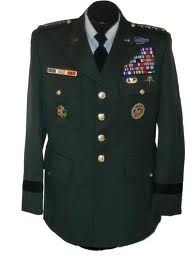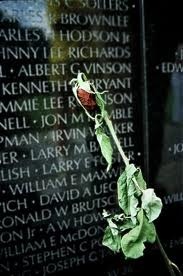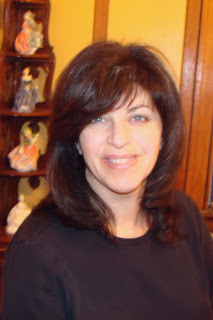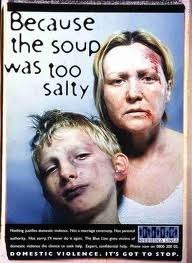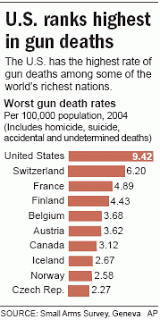Beverly Akerman's Blog, page 3
May 13, 2011
PIE (a short story from my new book, The Meaning of Children)
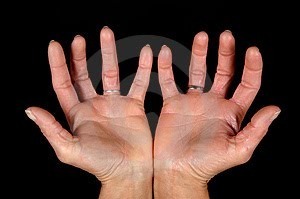
Some folks say your hands can tell the story of your life. Well, my hands cain't talk, but they've made so many pies, I bet they could do it themselves if you cut 'em off and gave 'em the right ingredients, I sure do.
'Course, I ain't made pie in going on forty years now. But for me, pie's like ridin' a bike: it's something I'll never forget.
It's the crust ever'one frets on. You got to measure out two cups of flour exactly, and a teaspoon salt. Eamon liked to tease me about this. He'd say, "Been making pie long?"
And I'd go, "My whole life entire."
And he'd say, "And you still measuring?"
There's things I did by feel. Mothering, for instance. Baking, I measured.
Mix that flour and salt in a bowl. I always used my largest, white with blue stripes round the side. A wedding gift from my Mama, come in a nested set, three different sizes. Like him and his two brothers, Eamon liked to say. Then cut in a cup of Crisco with a pastry blender, looks sort of like a small harp. When he was young and still in the kitchen, Eamon'd play on it a time or two, just to show me. You got to work that fat in real good, blend it, all the way through. The recipes say "till it looks like small peas," but that ain't nowhere near enough. I pity the woman what tries to make piecrust from the recipe on the side of a tin of Crisco, I sure do. You got to mix it in completely. Stop too soon, all you got's lumps of fat with flour on the outside. Never get a piecrust out of that. Get it right and it clumps up on its own. More you mix, the bigger they get. Pea-size ain't near enough, no sir. Needs to be lima beans. Bigger, even.
Then add your water, a tablespoon at a time. Mix well after each one. Four tablespoons in all, that's a quarter cup. Less sometimes, if it's real humid. 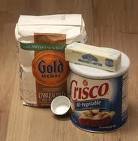
It was the day that Eamon left, ever'body's clothes sticking to 'em like a second skin.
Well.
Dust your hands with flour, make the dough into a ball. Knead it a bit if you like, just to be sure. And don't pay no never mind to them that says too much handling'll make that pie crust tough. You don't got to worry about that at all, uh-uh. The more you handle it, the better.
Babies are like that, too. Folks think you spoil 'em, picking them up whenever they cry. But some babies need it. They just have to feel your hands on 'em. You can carry them around with you all day if you have to. No sir, if it's one thing I know, holding them close is the making of men, not the ruining.
Next, you roll out that dough. Cut it in two. Plunk half on a piece of wax paper and dust it with a little flour, soft as talc. Cover with more of that wax paper, a little flour to keep that from sticking, too. A bottle of pop will do in a pinch if you don't have a rolling pin. Roll it thin, peel the top paper off, and take the bottom with the pie crust on it and flip it into a pie plate. Peel the paper off real careful-like, but don't pay no mind if it tears--just dip your fingers in some flour and press it right back. Mends it up and no one'll ever know the difference. But you can only compare a boy and a pie so far.[image error]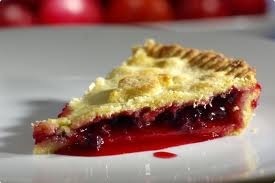
Put the filling in, roll the other crust out, too, and put that on top. Crimp the sides together real good so it don't leak none and cut some slits on top, for the steam.
Bake it, four hundred-twenty-five degrees, forty-five minutes to an hour, depending what-all's inside.
Best pie I ever made? Oh, that was on an early summer day, like I said, more'n forty years ago now. Ain't never made another. Promised myself I wouldn't, not till he come back home.
Well.
I remember it like yesterday. All of us smiling and laughing, talking and talking about nothing really, no sir. Eamon was like a brand-new penny that day, shining, handsome, everything before him. Telling me how much he loved me and respected his daddy, the two of them clapping each other on the back every time they was in spitting distance. Eamon even said he loved his germy younger brothers, punching them in the shoulder all day long, and then hugging them tight, just the once. His daddy was so proud of him. Funny how a suit with brass buttons can make a man lose all sense.
"It's an honour to serve," Eamon said. And I knew what he meant, I surely did.
The whole family was there, uncles and aunts, cousins, friends and neighbours, too. Even the Mayor, like it was some goddamn Fourth of July. We laid on a barbeque, just the way he liked it—ribs, cole slaw, potato salad, devilled eggs, corn on the cob, biscuits, watermelon, and of course his favourite, rhubarb pie. Made four of them that morning. Ever'body said I made the lightest crust around. Like I told you, the trick is to work it enough, to get everything mixed in just right.
Women often fail at pie because they give up too soon.
I brought it out to him, still warm from the oven, ice cream on the side. Eamon liked it that way, the tart bleeding into the sweet.
The light from the sun slanted long and low.
"If anything happens," he said.
And I hushed him, wouldn't hear it. Just wouldn't. I told him, "You finish that pie, now. Your ice cream's melting in the heat."
(an excerpt from The Meaning of Children and originally published by Gemini Magazine)
May 9, 2011
Being Interviewed by Mutsumi Takahashi, CTV Montreal News Anchor


May 8, 2011
The Meaning of Children: on Radio CJAD AM 800
She said many other fine things about the book. Have a listen...
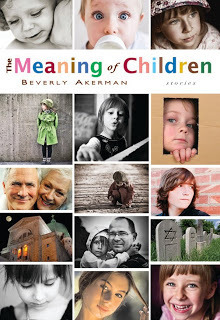
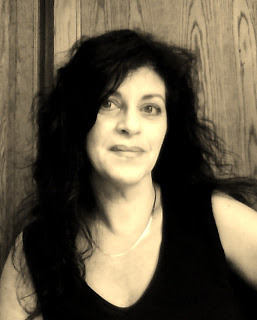
May 3, 2011
Students help Rwandan genocide survivor
Kayitesi survived the genocide and other atrocities that killed 800,000 Tutsi and pro-peace Hutu in approximately 100 days in mid-1994. This year, she was a student in Madeleine Mcbrearty's Health Promotion class (AHSC 460) in the Applied Human Sciences program. Kayitesi's mother raised over 20 community orphans, people Kayitesi considers brothers and sisters. Kayitesi ended up coming to Canada via refugee camps in Kenya and Sudan. "Being one of the survivors, I have a big responsibility to help those who made it but were not as lucky as me."
But she lives, at times, with feelings of shame coupled with survivor guilt. Last year, her sister Ernestine appealed for help Kayitesi was in no position to provide. "She married the wrong guy, someone who had killed over 2,000 Tutsis. Nobody knew this," says Kayitesi. He killed Ernestine, and then himself. "They left a few kids behind."
So when her mother called recently, begging for help for another sister, Vivian, also married but "still hungry and at the end of her rope," Kayitesi knew the best solution would be to get her sister back in school. But who could afford the $500 yearly fee? Enter the students of her Health Promotion class.
AHSC 460 is "about the seven dimensions of health: physical, emotional, spiritual, mental, social, environmental and occupational," Mcbrearty says. Students are asked to change two dimensions of their own health, working on issues as diverse as cigarettes, drugs, drinking, debt loads or savings, composting, or focusing on anger or self-esteem issues. It's a full year course, "very experiential. Learning to change the world by changing yourself is a big component of this course."
During the second-to-last class, Kayitesi performed a Rwandan dance "she did it to make herself feel better," says a classmate, Rachel Renaud (BA '11). Everyone was touched to see her so transformed. Kayitesi knew that AHSC 460 students were supposed to share what was going on in their lives, so she finally told classmate Matthew Riggs about her sister's situation. "When I told Matthew my feelings, that I would just like to help one person, Matthew told me I deserved to be happy. I've never been a really happy person, the kind who goes to dances and parties."
Riggs asked his classmates to each bring $15 for Kayitesi's sister. "I felt they would think I was asking for myself," Kayitesi says. Instead, Renaud, Executive Director of the Renaud family's Roasters Foundation and all their philanthropic work, arranged for matching funds. Another student, Kelly Wilkinson, works with Big Brothers Big Sisters, and got help from her co-workers there.
At the final class, Kayitesi invited dancers and drummers in Rwandan costume to perform again, this time as a thank you. "We raised $1,400 with more coming in, enough to start an official program with the Foundation," Renaud says. And enough to keep Kayitesi's sister in school for three years.
The experience was "wonderful, amazing. I didn't know they would be there to help me," Kayitesi says. "I've slept well since."
Originally published in the Concordia Journal.
April 26, 2011
NDG's Green Gal--Jessica Gal, that is
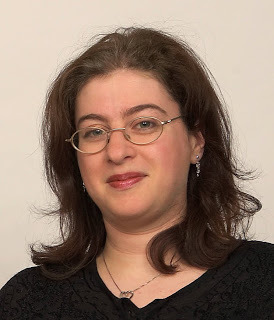
This past Easter weekend, NDG's Green Gal—the intrepid Jessica Gal—found the time to come and talk with me. And so, feeling a tad biblical (even though it isn't part of my Bible), I will take her last comments first. Even though the Green Party isn't my party, I respect Jessica's commitment to her ideals and admire her motivation in trying to make her city, province, and country a better place.
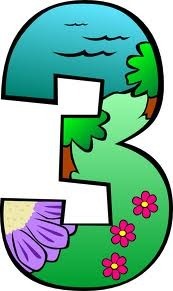 So, in this latest election, her third, why does she do it? "Democracy," she says. "If you don't use it, you lose it. It's our responsibility as citizens to be involved. People have fought and died for this right. That means a lot to me."
So, in this latest election, her third, why does she do it? "Democracy," she says. "If you don't use it, you lose it. It's our responsibility as citizens to be involved. People have fought and died for this right. That means a lot to me."
Jessica has run once for the provincial Greens, a party she helped create, and twice for the federal party. She says she wouldn't be involved in politics if it weren't for the Greens. She appreciates their incredible diversity, and says they attract a different sort, people united by a common set of values: "they 'get it,' they understand that we need to rebuild our society to be sustainable for the future because we're about to hit a brick wall, environmentally." 
Canadians, Jessica says, don't realize how much our country's reputation has been damaged on the world stage. "It's vital to get Canada on track to be a leader in the global sustainable economy, instead of winning fossil of the year awards." But the Green Party isn't only concerned with the environment (or their leader, Elisabeth May's, disqualification from the single televised party leaders' debate). Proportional representation is also a crucial part of their platform. She also says the current electoral process is often "very misunderstood" by the population.
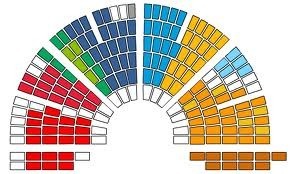 In door-to-door campaigning, Gal often meets people "who speak of 'the need to vote strategically.' Even when they're voting in a very safe riding," one that is certainly not about to turn Conservative. "People don't understand the system. People should feel completely free to vote their choice." Proportional representation means the number of seats each party receives corresponds to the real measure of public opinion. A government ruling with 35 per cent of the actual vote? "That's a poorly functioning democracy right there. That makes people feel that their vote doesn't count, resulting in lowering of voter turnout and increasing public apathy." Making things worse, she adds, "are the kind of stunts that this Conservative government has engaged in—prorogation, disrupting committee work, Ministers and bureaucrats not allowed to speak out."
In door-to-door campaigning, Gal often meets people "who speak of 'the need to vote strategically.' Even when they're voting in a very safe riding," one that is certainly not about to turn Conservative. "People don't understand the system. People should feel completely free to vote their choice." Proportional representation means the number of seats each party receives corresponds to the real measure of public opinion. A government ruling with 35 per cent of the actual vote? "That's a poorly functioning democracy right there. That makes people feel that their vote doesn't count, resulting in lowering of voter turnout and increasing public apathy." Making things worse, she adds, "are the kind of stunts that this Conservative government has engaged in—prorogation, disrupting committee work, Ministers and bureaucrats not allowed to speak out."
She recommends Elisabeth May's book Losing Confidence, which looks at the evolution of our political system over the past several decades, and also the recent history of the Conservative Party. Sometimes the Green Party is criticized for "splitting the left. But it's partly the Red Tories coming to us. We attract more students than any other party, and also more of those who had stopped voting. We're the only party to have steadily increased our vote over the past few years."
Canadians have to talk about the shift the economy has to make. "We have to get the price right—the price on carbon, on pollution, and on packaging."
So what makes Jessica run? "I want people to have the option of voting for something they can feel good about, instead of the lesser of two evils. One person can make a difference."
To find out more, about Jessica and her party, please visit www.ndglachinegreenparty.org. Find her on Twitter at @NDGLachineGreen.
April 16, 2011
Some math symbols are more = than others
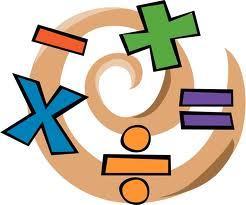
(Originally published in: Concordia Journal)
Apparently, a not-so-funny thing happened on elementary students' way to higher mathematics — most of them were left without a proper understanding of the equal sign. This problem can get in the way of success later on in tackling algebra and, because algebra is a "gatekeeper" to higher mathematics, misunderstanding the equal sign can even ultimately influence a student's choice of career.Concordia's Helena Osana, a professor in the Department of Education, is part of a three-year $157,000 research program, funded by the Social Sciences and Humanities Research Council of Canada, that's trying to understand this phenomenon and rectify it, working closely with elementary schoolteachers every step of the way.
Osana, an educational psychologist who focuses on working with math teachers, says her ultimate goal is "to enhance children's thinking about mathematics, particularly at the elementary level." The project is being done in collaboration with Jeff Bisanz, director of the Centre for Research in Child Development at the University of Alberta and a developmental psychologist in their Department of Psychology.
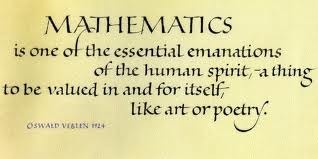 Over the past 10 years or so, Osana says, educators have been paying more attention to the problems children have with the equal sign. "Research showed that when children were confronted with a non-standard problem, for example, worded like this one: 'What number would you put in the blank to make this a true number sentence? 8 + 4 = ___ + 5,' the majority of elementary schoolchildren — from Grade 1 all the way to Grade 6 — will say the answer is 12. And that's because they think that the equal sign means 'The answer comes next,' instead of realizing that what really matters is that the total on each side of the equal symbol is the same."
Over the past 10 years or so, Osana says, educators have been paying more attention to the problems children have with the equal sign. "Research showed that when children were confronted with a non-standard problem, for example, worded like this one: 'What number would you put in the blank to make this a true number sentence? 8 + 4 = ___ + 5,' the majority of elementary schoolchildren — from Grade 1 all the way to Grade 6 — will say the answer is 12. And that's because they think that the equal sign means 'The answer comes next,' instead of realizing that what really matters is that the total on each side of the equal symbol is the same."There are probably many reasons why this deficit occurs, Osana continues: Often,
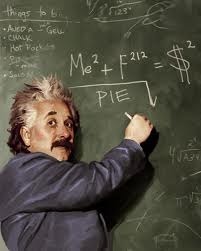 children aren't offered explicit instruction about the equal sign, and it's also possible that frequently used standard equations (e.g. 8 + 4 = 12) in effect train students to misunderstand the meaning of the symbol. "It is possible for children to think accurately about the equal sign, but teachers must pay attention to it in the classroom. We're working on ways of teaching this explicitly."
children aren't offered explicit instruction about the equal sign, and it's also possible that frequently used standard equations (e.g. 8 + 4 = 12) in effect train students to misunderstand the meaning of the symbol. "It is possible for children to think accurately about the equal sign, but teachers must pay attention to it in the classroom. We're working on ways of teaching this explicitly."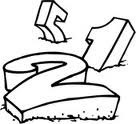 Year 1 of the project, conducted at the University of Alberta, was spent teaching children in grades 2 to 4 to solve non-standard equations using various methods in a laboratory setting. Now, in year 2 of the project, Osana's team is bringing the techniques that worked in the lab to Montreal classrooms. But they realize that lab-approved methods aren't always equally successful in a classroom setting. "Lab activities are very controlled. In class, kids behave very differently. They're allowed to ask questions and to talk to the teacher and to each other. There are many more variables. What we're doing is working with the teachers so that our solutions have greater validity in a natural class setting."
Year 1 of the project, conducted at the University of Alberta, was spent teaching children in grades 2 to 4 to solve non-standard equations using various methods in a laboratory setting. Now, in year 2 of the project, Osana's team is bringing the techniques that worked in the lab to Montreal classrooms. But they realize that lab-approved methods aren't always equally successful in a classroom setting. "Lab activities are very controlled. In class, kids behave very differently. They're allowed to ask questions and to talk to the teacher and to each other. There are many more variables. What we're doing is working with the teachers so that our solutions have greater validity in a natural class setting."Seven Montreal-area teachers, each teaching two math classes, are part of the project. Osana's team will lead three daylong professional development (PD) seminars for the teachers. "At the first meeting, we explained the kinds of misconceptions students have about the equal sign. Teachers were shocked to learn only two to ten per cent of students in elementary school are able to solve non-standard problems, even if they have good addition and subtraction skills."
Following each PD session, teachers return to work with their students. In a subsequent session, Osana says, "we showed the teachers several techniques, some laboratory- tested and others not, that would help students master this concept. We're asking them to implement these methods and then give us feedback on what worked."
Osana and her team meet the teachers next in May. Meanwhile, they will videotape math sessions in the 14 classrooms through most of April. "We'll be learning a lot by observing students' discussions and by being responsive to any modifications the teachers make." Those gleanings will be put in practice in year 3 of the program, this time in Alberta classrooms. Ultimately, the research findings will be used across Canada to help improve the teaching of mathematics.
"Our program distinguishes itself by relying on teachers. We're not going into the classroom and telling them what to do. We recognize that teachers are classroom experts, so we've got a true partnership going to develop techniques that will work in real-life settings."
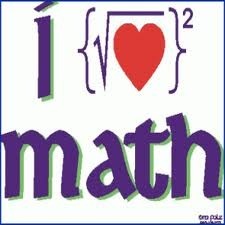
April 15, 2011
Beverly Akerman Explains Mysteries of Childhood and Children
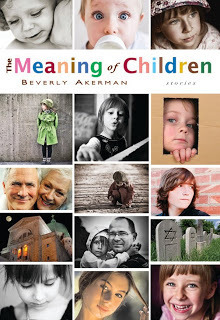
FOR IMMEDIATE RELEASE
MONTREAL, April 15, 2011 – Beverly Akerman's award-winning story collection The Meaning of Children launches April 28th at Westmount's Nicholas Hoare Books, from 6 to 8 pm. At that time, Akerman promises to reveal her answers to the conundrums of children.
"What do children know and feel that we adults have forgotten? Why, despite the pain, mess, and occasional heartbreak, do we continue bringing children into the world? What's really in it for us?" Ms. Akerman says she's puzzled over these questions for decades. "And I know I'm not alone." She describes her first book as a three-dimensional look at children in our emotional universe.
Winner of the 2010 David Adams Richards Prize
Judge JoAnne Soper-Cook said The Meaning of Children had a keen, incisive vision into the hidden world of children, as well as intimate knowledge of the secret spaces existing between the everyday events of life. "There is knowledge here, knowledge of those important, life defining moments of puberty, the birth of a sibling, an encounter with a possibly dangerous stranger. Overall, a work with a brilliant sense of story."
"Each story [is] a reminder of what an optimistic endeavour it is to parent… a good gift for a new mother. Akerman holds up our greatest fears, not to dwell on them, but to marvel at our commitment to life, especially to passing it on to others." Anne Chudobiak, The Montreal Gazette.
"This isn't the invented childhood of imagination and wonderment…[here] children both corrupt and redeem: each other, family relationships and the female body." Katie Hewitt, The Globe & Mail
About Beverly Akerman
Ms. Akerman's recent honours include nominations for the Pushcart Prize in fiction and nonfiction and for the National Magazine Awards. Her credits include The Antigonish Review, Best New Writing 2011, carte blanche, cellstories.net, The Dalhousie Review, Descant, Grain, Joyland.ca, The Nashwaak Review, The New Quarterly, Rampike, Red Wheelbarrow, The Vocabula Review, Windsor Review, Maclean's, The Toronto Star, The National Post, The Montreal Gazette and CBC Radio's Sunday Edition, myriad scientific journals, and other publications. Ms. Akerman's work will be featured in Blue Met's April 29th "Imagine Montreal" event.
Contact Information
Michael Callaghan
Exile/Excelsior Publishing Inc.,
134 Eastbourne Ave., Toronto ON M5P 2G6
Email: info@exileeditions.com
Website: http://www.exilequarterly.com/quarterly/
March 26, 2011
Guns, law & order, & Stephen Harper
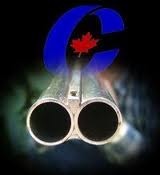
The interesting thing about staring down a gun barrel is how small the hole is where the bullet comes out, yet what a big difference it would make in your social schedule. ~~P.J. O'Rourke, Holidays from Hell, 1989
About 80 per cent of Canada's nine million guns are owned by men, so perhaps by definition, gun control can be seen as a "woman's issue." And repeated polling shows a substantial majority of women support the gun registry, perhaps because we know that guns are often used to harm or intimidate women in the throes of domestic violence. Women around the world are at greatest risk of harm from their intimate partners—"the usual suspects" in such cases. Fully 85 per cent of Canadian women who are murdered are killed by their spouse or partner, and most of those shot dead are killed with legally owned firearms.
Despite pro-gun lobby bluster, this gun violence is not just an urban phenomenon — the rate of women killed with guns is higher in rural areas because rural people own more guns. And murder is just the tip of the domestic violence iceberg—for every woman killed, many more are injured or threatened. And these "domestic violence" incidents appear in the papers almost daily. Several examples from a short period in 2009 (when this article originally appeared):
Smith AB, July 30th: Ian Jeffrey Paget kills estranged wife Joan Hanson, her daughter and granddaughter, and then turns the rifle on himself at her rural home in northern Alberta.
Kitchener ON, August 11th: Nadia Gehl is shot in early February at a bus stop near her home. Months later, police nab 3 suspects: her husband and two of his friends.
Orangeville ON, September 13th: Police investigate a murder-suicide that left a mother of two and her estranged husband dead. Witnesses say 39-year-old Heidi Ferguson, shot in the chest, sought help at a neighbour's. As she lay dying, Ferguson reportedly cried, "I've been shot by my husband ... please help me." An avid hunter and gun collector, Hugh Ferguson turned the gun on himself after a standoff with police.
Winnipeg MB, September 17th: Police are called after a 19-year-old woman is allegedly assaulted and threatened with a firearm. The woman flees the house and calls police from another area residence.
Fort St. John BC, September 30th: A northeastern B.C. man is shot and killed by the RCMP after a five-day standoff that began when the 41-year-old farm resident pursued a van carrying his wife, an unspecified number of children and a friend, and shot out the front tires.
Since the gun registry was created, close to 23,000 firearms licenses have been refused or revoked because of safety concerns. We register our cars and our dogs--not to register our guns would be criminal.
No matter what the gun lobby says, gun control works. Consider the following :
· Controls on rifles and shotguns were strengthened in 1991: that year 1441 Canadians were killed with guns. By 2005, the number of such deaths dropped by almost half, to 818.
· The number of women murdered with guns fell from 85 in 1991 to 32 in 2005. But the number of women murdered by weapons other than firearms declined only slightly during the same period of time. Again, the effectiveness of gun control is inescapable.
My son was at Dawson College on September 13, 2006 when Kimveer Gill went on his murderous rampage. I will never understand why Mr. Gill had such easy access to such enormous firepower--the fact that he managed to kill "only" a single young woman was due to the fortuitous coincidental presence of two brave and well-trained police officers. (I say "only" because, of course, for her parents, family and friends, the murder of 18-year-old Anastasia De Sousa is no small loss.) Kimveer Gill didn't need those guns and he shouldn't have had them. Why should his right to feel "big and bad" have trumped Ms. De Sousa's, my son's, or anyone else's safety?
 And so I support more gun control, not less. Please don't let Stephen Harper destroy our gun laws.
And so I support more gun control, not less. Please don't let Stephen Harper destroy our gun laws.
Though our Prime Minister may refuse to face it, rifles and shotguns are the firearms used most often to threaten women and children, and the weapons of choice in the murder of police officers. Look, for example, at the 3 Mounties killed in Mayerthorpe, AB. And the only charges levied in that case were against the gun providers, who were traceable because of the gun registry!
When Mr. Harper talks about law and order one day, and gutting gun control the next, I'm not sure whether to laugh or cry.
Contact your MP on this issue. Don't let Mr. Harper play fast and loose with our children's lives.
March 17, 2011
Stellar New Review in The Montreal Gazette & Online Interview at Fictionaut
Last Saturday featured an incredibly good Montreal Gazette review of The Meaning of Children, by freelancer Anne Chudobiak! She may just be my ideal reader...
Here's just a taste of it:

"...The Meaning of Children took on the tone of motivational reading, each story a reminder of what an optimistic endeavour it is to parent...
"The book touches on a lot of the biggest parental 'what ifs.' Kidnapping. Hate crime. Death by drowning. Suicide. Even so, it would make a good gift for a new mother. Akerman holds up our greatest fears, not to dwell on them, but to marvel at our commitment to life, especially to passing it on to others. Says one character, looking back, 'Life had been perfect … but I'd been too busy to notice.'"
The book is appearing in Canadian bookstores from Montreal to Calgary..."Only in Canada, you say? Pity."
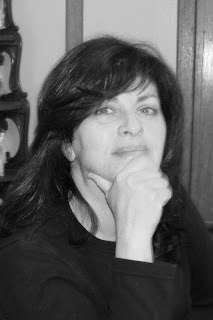
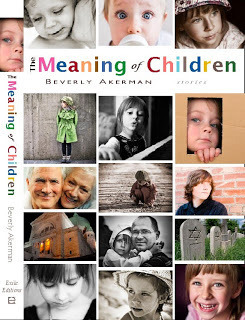
-----------------------
My first online interview is up at the Fictionaut blog.
Many thanks to interviewer Meg Pokrass and Jürgen Fauth (pictured at right) and the rest of the folks at Fictionaut, a great place to read and share your fiction. Here's an excerpt:
What do you do when you feel stuck or uninspired… suggestions for unblocking
 creativity?
creativity?
I'm a big believer in getting out of your comfort zone–I've traveled to workshops/fellowships/residencies in Alberta, New Brunswick, Manitoba, Ohio, and Oregon. When I'm unsettled, my emotions are closer to the surface, and I highly recommend it. I've even written naked in the Super 8 Airport Motel in Portland–one of my favorite stories poured out there when, after a bad dream, I got up and started writing instead of turning over and trying to get a little more shuteye. I wrote for a couple of hours, made my plane and kept on writing in the stopover at San Francisco (don't worry: I was clothed by then). Other suggestions: go to art galleries, watch movies, get in touch with nature, take long walks, ride a bike, visit your old neighborhood, join a choir, look at old photos–your own or even strangers'. Whatever it takes to stir yourself up. And work at finding things that make you happy, that make you laugh.
What inspires you?
Where do stories come from? What makes them happen… for you? Talk about recurring theme or themes in your own work here…Kindness and compassion. How much some do for others. The feeling of being in this together, the ol' John Donne thing. Seeing kids enjoy things. My mother used to take
my kids to see plays put on by a local theatre–the rapt look on the faces in the audience used to make me cry. Probably still would. Luckily, my kids are grown and I don't have to humiliate myself in public that way quite as much anymore. But I'm still trying to move people.
---------------------------------------
Again, you can find the rest of the interview at Fictionaut.
My first online interview, brought to you by Fictionaut

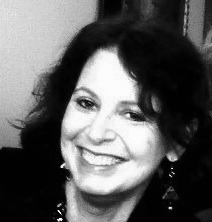
My first online interview is up at the Fictionaut blog. Many thanks to interviewer Meg Pokrass and Jürgen Fauth (pictured at right) and the rest of the folks at Fictionaut, a great place to read and share your fiction. Here's an excerpt:
What do you do when you feel stuck or uninspired… suggestions for unblocking creativity?
I'm a big believer in getting out of your comfort zone–I've traveled to workshops/fellowships/residencies in Alberta, New Brunswick, Manitoba, Ohio, and Oregon. When I'm unsettled, my emotions are closer to the surface, and I highly recommend it. I've even written naked in the Super 8 Airport Motel in Portland–one of my favorite stories poured out there when, after a bad dream, I got up and started writing instead of turning over and trying to get a little more shuteye. I wrote for a couple of hours, made my plane and kept on writing in the stopover at San Francisco (don't worry: I was clothed by then). Other suggestions: go to art galleries, watch movies, get in touch with nature, take long walks, ride a bike, visit your old neighborhood, join a choir, look at old photos–your own or even strangers'. Whatever it takes to stir yourself up. And work at finding things that make you happy, that make you laugh.
What inspires you?
Where do stories come from? What makes them happen… for you? Talk about recurring theme or themes in your own work here…Kindness and compassion. How much some do for others. The feeling of being in this together, the ol' John Donne thing. Seeing kids enjoy things. My mother used to take my kids to see plays put on by a local theatre–the rapt look on the faces in the audience used to make me cry. Probably still would. Luckily, my kids are grown and I don't have to humiliate myself in public that way quite as much anymore. But I'm still trying to move people.
---------------------------------------
You can find the rest of the interview at Fictionaut. And I haven't even mentioned Saturday's STELLAR Montreal Gazette review of The Meaning of Children, by freelancer Anne Chudobiak!
Here's just a taste of it:
"...The Meaning of Children took on the tone of motivational reading, each story a reminder of what an optimistic endeavour it is to parent...
The book touches on a lot of the biggest parental 'what ifs.' Kidnapping. Hate crime. Death by drowning. Suicide. Even so, it would make a good gift for a new mother. Akerman holds up our greatest fears, not to dwell on them, but to marvel at our commitment to life, especially to passing it on to others. Says one character, looking back, 'Life had been perfect … but I'd been too busy to notice.'"
The book is appearing in Canadian bookstores from Montreal to Calgary..."Only in Canada, you say? Pity."



